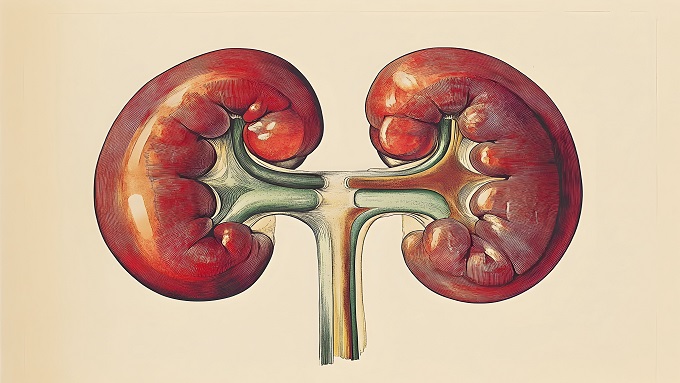Investigating the Prospect of C-Type Lectin-like Receptors-2 for Predicting Prognosis of Ischemic Stroke: Rapid Review of Molecular Mechanisms to Clinical Study

Downloads
Highlights
- The potential of CLEC-2 as a prognostic biomarker for ischemic stroke is supported by in vivo and clinical studies demonstrating its role in thrombo-inflammatory mechanisms and clinical outcome prediction.
- Analysis of clinical studies indicates that elevated plasma CLEC-2 levels are associated with an increased risk of recurrent vascular events and mortality in acute ischemic stroke, suggesting its promise as a noninvasive tool for stroke prognosis assessment.
ABSTRACT
Background: Every year, over 13.7 million individuals experience strokes, resulting in approximately 5.8 million deaths. C-type lectin-like receptor 2 (CLEC-2) plays a significant role in platelet activation, which is elevated in ischemic stroke and is associated with disease progression and prognosis. Objective: To review the literature on the potential of CLEC-2 as a biomarker for assessing the prognosis and progression of ischemic stroke. Material and Method: This rapid review followed the Cochrane interim guidelines and adhered to PRISMA standards. A comprehensive search was conducted in PubMed, Cochrane Library, and Google Scholar to identify original research articles published in English over the past 10 years. Studies at various stages—including in vitro, in vivo, and clinical trials—were included if they evaluated the association between CLEC-2 and acute ischemic stroke. Risk of bias was assessed using the QUIPS tool for clinical studies and SYRCLE’s tool for animal studies. Study selection and data extraction were performed independently by three reviewers. Result: The search identified five relevant articles: two experimental studies and three clinical prognostic studies examining CLEC-2 in the context of ischemic stroke. CLEC-2, a receptor for podoplanin expressed in various tumors and lymphatic endothelial cells, induces a calcium surge independent of secondary platelet activation. In vivo studies have demonstrated increased levels of CLEC-2 and podoplanin, which are highly expressed on neurons and microglia in ischemic brain regions. The three clinical studies showed that plasma CLEC-2 levels have prognostic value in predicting recurrent vascular events and mortality in patients with acute ischemic stroke. Conclusion: Plasma CLEC-2 shows potential as a biomarker for evaluating the progression and prognosis of acute ischemic stroke.
Ando, K., Natsumeda, M., Kawamura, M., Shirakawa, K., Okada, M., Tsukamoto, Y., Eda, T., Watanabe, J., Saito, S., Takahashi, H., Kakita, A., Oishi, M., Fujii, Y. 2023. Elevated ratio of C-type lectin-like receptor 2 level and platelet count (C2PAC) aids in the diagnosis of post-operative venous thromboembolism in IDH-wildtype gliomas. Thrombosis Research, 223: 36–43. doi: 10.1016/j.thromres.2023.01.018.
Bender, M., May, F., Lorenz, V., Thielmann, I., Hagedorn, I., Finney, B. A., Vögtle, T., Remer, K., Braun, A., Bösl, M., Watson, S. P., Nieswandt, B. 2013. Combined in vivo depletion of glycoprotein VI and C-type lectin-like receptor 2 severely compromises hemostasis and abrogates arterial thrombosis in mice. Arteriosclerosis, Thrombosis, and Vascular Biology, 33(5): 926–934. doi: 10.1161/ATVBAHA.112.300672.
Chatterjee, M., Ehrenberg, A., Toska, L. M., Metz, L. M., Klier, M., Krueger, I., Reusswig, F., Elvers, M. 2020. Molecular drivers of platelet activation: Unraveling novel targets for anti-thrombotic and anti-thrombo-inflammatory therapy. International Journal of Molecular Sciences, 21(21): 7906. doi: 10.3390/ijms21217906.
Cherpokova, D., Bender, M., Morowski, M., Kraft, P., Schuhmann, M. K., Akbar, S. M., Sultan, C. S., Hughes, C. E., Kleinschnitz, C., Stoll, G., Dragone, L. L., Watson, S. P., Tomlinson, M. G., Nieswandt, B. 2015. SLAP/SLAP2 prevent excessive platelet (hem)ITAM signaling in thrombosis and ischemic stroke in mice. Blood, 125(1): 185–194. doi: 10.1182/blood-2014-06-580597.
De Meyer, S. F., Denorme, F., Langhauser, F., Geuss, E., Fluri, F., Kleinschnitz, C. 2016. Thromboinflammation in stroke brain damage. Stroke, 47(4): 1165–1172. doi: 10.1161/STROKEAHA.115.011238.
Fu, J., Xia, L. 2016. CLEC-2 and podoplanin, partners again. Blood, 127(13): 1629–1630. doi: 10.1182/blood-2016-02-695445.
Garritty, C., Gartlehner, G., Nussbaumer-Streit, B., King, V. J., Hamel, C., Kamel, C., Affengruber, L., Stevens, A. 2021. Cochrane rapid reviews methods group offers evidence-informed guidance to conduct rapid reviews. Journal of Clinical Epidemiology, 130: 13–22. doi: 10.1016/j.jclinepi.2020.10.007.
Hatakeyama, K., Kaneko, M. K., Kato, Y., Ishikawa, T., Nishihira, K., Tsujimoto, Y., Shibata, Y., Ozaki, Y., Asada, Y. 2012. Podoplanin expression in advanced atherosclerotic lesions of human aortas. Thrombosis Research, 129(4): e70–e76. doi: 10.1016/j.thromres.2012.01.003.
Hayden, J. A., van der Windt, D. A., Cartwright, J. L., Côté, P., Bombardier, C. 2013. Assessing bias in studies of prognostic factors. Annals of Internal Medicine, 158(4): 280–286. doi: 10.7326/0003-4819-158-4-201302190-00009.
Hooijmans, C. R., Rovers, M. M., de Vries, R. B., Leenaars, M., Ritskes-Hoitinga, M., Langendam, M. W. 2014. SYRCLE’s risk of bias tool for animal studies. BMC Medical Research Methodology, 14(1): 43. doi: 10.1186/1471-2288-14-43.
Indonesia Basic Health Research Team. 2013. Laporan nasional riset kesehatan dasar 2013 [In Indonesian]. Health Research and Development Agency, Ministry of Health of the Republic of Indonesia. Available at: https://repository.badankebijakan.kemkes.go.id/id/eprint/4428/
Inoue, O., Hokamura, K., Shirai, T., Osada, M., Tsukiji, N., Hatakeyama, K., Umemura, K., Asada, Y., Suzuki-Inoue, K., Ozaki, Y. 2015. Vascular smooth muscle cells stimulate platelets and facilitate thrombus formation through platelet CLEC-2: Implications in atherothrombosis. PLOS ONE, 10(9): e0139357. doi: 10.1371/journal.pone.0139357.
Inoue, O., Osada, M., Nakamura, J., Kazama, F., Shirai, T., Tsukiji, N., Sasaki, T., Yokomichi, H., Dohi, T., Kaneko, M., Kurano, M., Oosawa, M., Tamura, S., Satoh, K., Takano, K., Miyauchi, K., Daida, H., Yatomi, Y., Ozaki, Y., Suzuki-Inoue, K. 2019. Soluble CLEC-2 is generated independently of ADAM10 and is increased in plasma in acute coronary syndrome: Comparison with soluble GPVI. International Journal of Hematology, 110(3): 285–294. doi: 10.1007/s12185-019-02680-4.
Ishikura, H., Irie, Y., Kawamura, M., Hoshino, K., Nakamura, Y., Mizunuma, M., Maruyama, J., Nakashio, M., Suzuki-Inoue, K., Kitamura, T. 2022. Early recognition of sepsis-induced coagulopathy using the C2PAC index: A ratio of soluble type C lectin-like receptor 2 (sCLEC-2) level and platelet count. Platelets, 33(6): 935–944. doi: 10.1080/09537104.2021.2019694.
Kuriakose, D., Xiao, Z. 2020. Pathophysiology and treatment of stroke: Present status and future perspectives. International Journal of Molecular Sciences, 21(20): 7609. doi: 10.3390/ijms21207609.
Martyanov, A. A., Balabin, F. A., Dunster, J. L., Panteleev, M. A., Gibbins, J. M., Sveshnikova, A. N. 2020. Control of platelet CLEC-2-mediated activation by receptor clustering and tyrosine kinase signaling. Biophysical Journal, 118(11): 2641–2655. doi: 10.1016/j.bpj.2020.04.023.
McKee, C. A., Lukens, J. R. 2016. Emerging roles for the immune system in traumatic brain injury. Frontiers in Immunology, 7. doi: 10.3389/fimmu.2016.00556.
Meng, D., Luo, M., Liu, B. 2021. The role of CLEC-2 and its ligands in thromboinflammation. Frontiers in Immunology, 12. doi: 10.3389/fimmu.2021.688643.
Meng, D., Ma, X., Li, H., Wu, X., Cao, Y., Miao, Z., Zhang, X. 2021. A role of the podoplanin-CLEC-2 axis in promoting inflammatory response after ischemic stroke in mice. Neurotoxicity Research, 39(2): 477–488. doi: 10.1007/s12640-020-00295-w.
Ministry of Health of The Republic of Indonesia. 2017. Germas cegah stroke (in Indonesian). Ministry of Health of The Republic of Indonesia. Available at: https://p2ptm.kemkes.go.id/tag/germas-cegah-stroke.
Nishigaki, A., Ichikawa, Y., Ezaki, M., Yamamoto, A., Suzuki, K., Tachibana, K., Kamon, T., Horie, S., Masuda, J., Makino, K., Shiraki, K., Shimpo, H., Shimaoka, M., Suzuki-Inoue, K., Wada, H. 2021. Soluble C-type lectin-like receptor 2 elevation in patients with acute cerebral infarction. Journal of Clinical Medicine, 10(15): 3408. doi: 10.3390/jcm10153408.
Page, M. J., McKenzie, J. E., Bossuyt, P. M., Boutron, I., Hoffmann, T. C., Mulrow, C. D., Shamseer, L., Tetzlaff, J. M., Akl, E. A., Brennan, S. E., Chou, R., Glanville, J., Grimshaw, J. M., Hróbjartsson, A., Lalu, M. M., Li, T., Loder, E. W., Mayo-Wilson, E., McDonald, S., … Moher, D. 2021. The PRISMA 2020 statement: An updated guideline for reporting systematic reviews. BMJ, n71. doi: 10.1136/bmj.n71.
Roever, L., Tse, G., Biondi-Zoccai, G. 2019. Plasma CLEC-2 (C-type lectin receptor 2) in patients with acute ischemic stroke. Stroke, 50(1): 3–3. doi: 10.1161/STROKEAHA.118.023696.
Saini, V., Guada, L., Yavagal, D. R. 2021. Global epidemiology of stroke and access to acute ischemic stroke interventions. Neurology, 97(20_Supplement_2). doi: 10.1212/WNL.0000000000012781.
Sierra, C., Coca, A., Schiffrin, E. L. 2011. Vascular mechanisms in the pathogenesis of stroke. Current Hypertension Reports, 13(3): 200–207. doi: 10.1007/s11906-011-0195-x.
Smela, B., Toumi, M., Świerk, K., Francois, C., Biernikiewicz, M., Clay, E., Boyer, L. 2023. Rapid literature review: Definition and Methodology. Journal of Market Access & Health Policy, 11(1). doi: 10.1080/20016689.2023.2241234.
Sung, P., Sun, C., Tao, M., Hsieh, S. 2023. Inhibition of SARS‐CoV‐2‐mediated thromboinflammation by CLEC2.Fc. EMBO Molecular Medicine, 15(7). doi: 10.15252/emmm.202216351.
Suzuki-Inoue, K. 2019. Platelets and cancer-associated thrombosis: Focusing on the platelet activation receptor CLEC-2 and podoplanin. Blood, 134(22): 1912–1918. doi: 10.1182/blood.2019001388.
Suzuki-Inoue, K., Tsukiji, N., Shirai, T., Osada, M., Inoue, O., Ozaki, Y. 2018. Platelet CLEC-2: Roles beyond hemostasis. Seminars in Thrombosis and Hemostasis, 44(02): 126–134. doi: 10.1055/s-0037-1604090.
Uchiyama, S., Suzuki-Inoue, K., Wada, H., Okada, Y., Hirano, T., Nagao, T., Kinouchi, H., Itabashi, R., Hoshino, H., Oki, K., Honma, Y., Ito, N., Sugimori, H., Kawamura, M. 2023. Soluble C-type lectin-like receptor 2 in stroke (CLECSTRO) study: Protocol of a multicentre, prospective cohort of a novel platelet activation marker in acute ischaemic stroke and transient ischaemic attack. BMJ Open, 13(9): e073708. doi: 10.1136/bmjopen-2023-073708.
Wada, H., Ichikawa, Y., Ezaki, M., Yamamoto, A., Tomida, M., Yoshida, M., Fukui, S., Moritani, I., Shiraki, K., Shimaoka, M., Iba, T., Suzuki-Inoue, K., Shimpo, H. 2022. Elevated plasma soluble C-type lectin-like receptor 2 is associated with the worsening of coronavirus disease 2019. Journal of Clinical Medicine, 11(4): 985. doi: 10.3390/jcm11040985.
World Health Organization. 2014. Global status report on noncommunicable diseases. World Health Organization. Available at: https://www.who.int/publications/i/item/9789241564854.
Wu, X., Zhang, W., Li, H., You, S., Shi, J., Zhang, C., Shi, R., Huang, Z., Cao, Y., Zhang, X. 2019. Plasma C‐type lectin‐like receptor 2 as a predictor of death and vascular events in patients with acute ischemic stroke. European Journal of Neurology, 26(10): 1334–1340. doi: 10.1111/ene.13984.
Yeung, J., Li, W., Holinstat, M. 2018. Platelet signaling and disease: Targeted therapy for thrombosis and other related diseases. Pharmacological Reviews, 70(3): 526–548. doi: 10.1124/pr.117.014530.
Zhang, X., Zhang, W., Wu, X., Li, H., Zhang, C., Huang, Z., Shi, R., You, T., Shi, J., Cao, Y. 2019. Prognostic significance of plasma CLEC-2 (C-Type Lectin-Like Receptor 2) in patients with acute ischemic stroke. Stroke, 50(1): 45–52. doi: 10.1161/STROKEAHA.118.022563.
Copyright (c) 2025 Rayhan Farandy, Muhammad Ilham Dhiya Rakasiwi, Muhammad Zaki Bariz Amaanullah, Nurul Gusti Khatimah

This work is licensed under a Creative Commons Attribution 4.0 International License.
1. The journal allows the author(s) to hold the copyright of the article without restrictions.
2. The journal allows the author(s) to retain publishing rights without restrictions.
3. The legal formal aspect of journal publication accessibility refers to Creative Commons Attribution 4.0 International License (CC-BY).
































